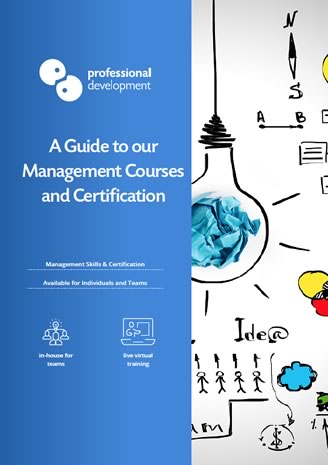What is Lean Six Sigma?
Lean six sigma has become an important asset for businesses of all kinds across the globe.
You may hear its name used frequently in business meetings, articles about business growth and strategic organisational plans.
You might also hear phrases like “thinking lean”, “continuous improvement”, or introducing a “process improvement culture”.
All of these things, along with other related terms can be casually dropped into conversation, often causing confusion.
This article is designed to offer a quick introduction to lean, six sigma and process improvement. It will also outline how all of these things are linked together.
Get the Full PDF Guide
We recommend downloading our 16-page PDF guide to lean six sigma to accompany this article.
The guide includes additional insights, such as understanding lean six sigma belts and roles, how to choose the right course, and guidelines on getting started.
In this article:
- What is process improvement?
- What is lean six sigma?
- What is lean?
- What is six sigma?
- Combining lean and six sigma?
- Benefits of using lean six sigma
- Why lean six sigma training is crucial
- Getting started with lean six sigma
- Advice & resources
What is Process Improvement?
Process improvement refers to an organised, systematic approach to analysing and improving how things are done in an organisation.
Process improvement aims to assess the current state of how things are done, analyse each step and element within the process, and implement measures to improve the process.
Structured methodologies are used to apply process improvement correctly. Lean and six sigma are the best known of these methodologies.
What is Lean Six Sigma?
It is the combination of two standalone process improvement methods: Lean and Six Sigma.
Although these methods can be used separately, they are often combined due to how incredibly effective they are when used together.
Let’s begin by outlining each on its own and then review how they work when combined.
What is Lean?
Lean targets waste. It is focused on achieving the most efficient process without compromising on quality.
The methodology originated in the manufacturing industry as an approach for streamlining production by eliminating any unnecessary or wasteful elements of the production process.
You may also hear it referred to as “lean management” or “lean culture”.
Key Tools & Phrases: Lean
-
DMAIC Cycle
The DMAIC Cycle (also called the DMAIC Process or Model) is a core part of the lean framework. DMAIC stands for Define, Measure, Analyse, Improve, and Control.
-
The 8 Wastes
The 8 Wastes are 8 resource areas or steps along the process to be addressed when conducting a lean process improvement initiative.
What is Six Sigma?
Many refer to six sigma as “problem solving”. When you are looking for a very simple definition, this is quite a good fit.
Six sigma is used to identify flaws or defects in a process, and to correct them. It tackles a problem (or potential problem) at the root, so that it can be prevented or resolved.
Six sigma is data-driven. It gathers detailed information and uses it to reduce variations or defects, with an end goal of a higher, more consistent quality level.
Key Tools & Phrases: Six Sigma
There are many different tools and approaches utilised within six sigma. Here are some of the best-known:
- 5S
- Value Stream Maps
- Process Mapping
- FMEA
- Kaizen Events
- Single Minute Exchange of Die (SMED)
- PDCA (Plan, Do, Check Act)
- Total Preventative Maintenance (TPM)
Combining Lean and Six Sigma
Using each method separately will yield positive results for any business. However, the two combined can achieve game-changing savings and improvements.
The approaches and techniques within each work easily in harmony.
Lean will reduce the waste in the entire process. Using Six Sigma will minimise any defects or variations in your product or service.
Let’s take a closer look at some of the benefits that can be achieved through the combined use of these process improvement titans.
Benefits of using Lean Six Sigma:
Once you begin to transform how you do things with lean six sigma, you will find benefits like the ones listed below.
You are also likely to find unexpected benefits unique to your organisation.
Here are some common benefits anyone using these methods consistently and correctly can expect:
- Less waste
- Lower costs
- More efficient processes
- Higher productivity
- Increased profitability
- Motivated workers
- Improved collaboration
- Less downtime
- Opportunities for growth
- Reduced errors and variation
Why Lean Six Sigma Training is Crucial
While the concept behind lean six sigma is very simple and seems like common sense, implementing it takes skill and a thorough knowledge of the different systems and techniques involved in both methodologies.
Attending lean six sigma training will give you a theoretical and practical understanding, along with a level of confidence in your capability to implement.
Getting Started with Lean Six Sigma
When choosing a starting point for your training, you have two great options.
- Both are suitable places to begin.
- Both are delivered live, online by our experienced lean six sigma training professionals.
- Both include certification.
Yellow Belt Training
We recommend our yellow belt training for those who want to get a solid introduction to process improvement and come away with tools and knowledge they can begin implementing immediately.
This is a 2-day course that will give you a confident understanding of the DMAIC Cycle and an introduction to six sigma concepts.
Green Belt Training
Our green belt is also suited for those who are new this area. It is more in-depth than the yellow belt course, with detailed focus on both methodologies.
Over 5 days (with a break in between Days 1 – 3 and Days 4 – 5), you will learn about a wide range of lean and six sigma tools for achieving process improvement excellence.
In-Company Training for Teams
If you would like to begin introducing a process improvement culture to your team or business, a tailored in-company programme is the natural solution.
You can learn more about how this works and request a custom quote by visiting our in-company page.
Advice & Resources
Here are some resources for your next steps in learning and research:
-
Get Advice
Talk to us about choosing a lean six sigma course that matches your needs.
Our consultants have a lot of experience in this area and can offer guidance on what will offer the most benefit for your current situation and goals.
You can call us directly at Freephone 1800 910 810 or ask a question online.
Ask a Question -
Download a Detailed Guide
Get your copy of our PDF Guide to Lean Six Sigma instantly.
This guide includes plenty of helpful information about lean six sigma and getting certified.
-
Follow-Up Articles
Process Improvement Benefits
Lean Six Sigma Belts & Roles
The difference between Lean and Six Sigma


